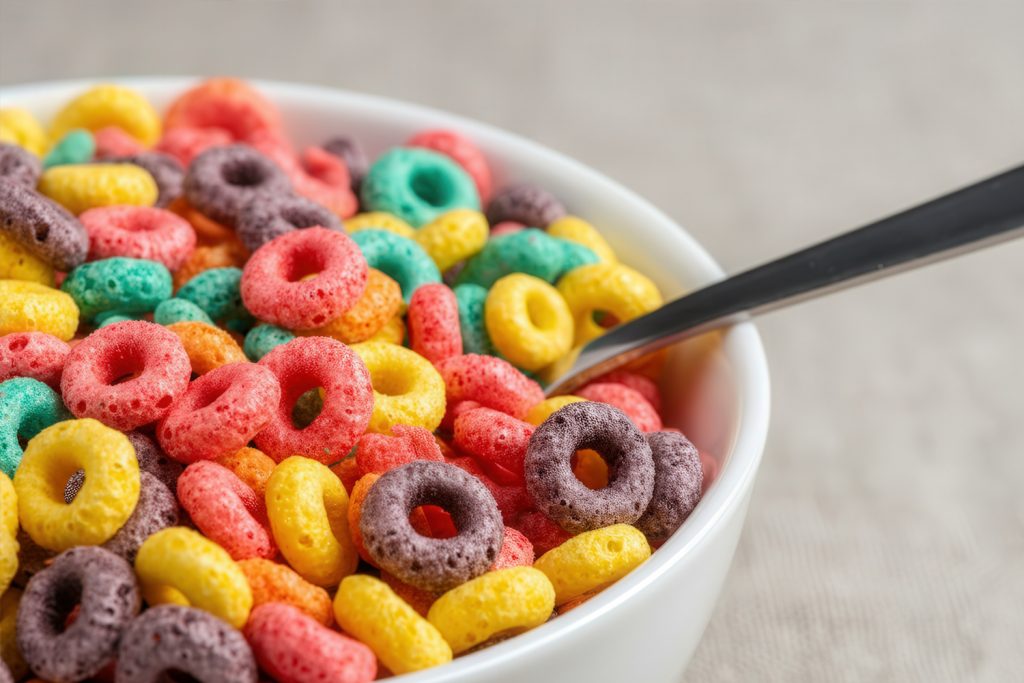 If you’re a parent, there’s a good chance you’ve heard of Red 40. Food dyes are a hot topic these days. In general, Americans are becoming more mindful about what’s in our food. But parents have been raising questions about artificial food dyes for decades. It seems like artificial dyes are everywhere. We might be conscious of their presence in things like cereal, candy and drinks. But when we check labels, we find dyes in everything from meats to medicines. How do food dyes affect our kids’ physical and emotional health? How can we tell if our children are allergic or sensitive to dyes? And what can we do to avoid them? Whether your child is showing signs of sensitivity or you want to eat healthier as a family, your pediatrician is here to help.
If you’re a parent, there’s a good chance you’ve heard of Red 40. Food dyes are a hot topic these days. In general, Americans are becoming more mindful about what’s in our food. But parents have been raising questions about artificial food dyes for decades. It seems like artificial dyes are everywhere. We might be conscious of their presence in things like cereal, candy and drinks. But when we check labels, we find dyes in everything from meats to medicines. How do food dyes affect our kids’ physical and emotional health? How can we tell if our children are allergic or sensitive to dyes? And what can we do to avoid them? Whether your child is showing signs of sensitivity or you want to eat healthier as a family, your pediatrician is here to help.
Are Food Dyes Safe For Children?
According to news reports, the FDA is planning to “phase out” certain artificial food dyes by 2026. However, food dyes are still allowed and remain present in many processed foods, including snacks and treats marketed to kids. While petroleum-based dyes like Red 40, Yellow 5 and 6, and Blue 1 are controversial, they’re not banned yet. They’re also still considered safe to eat, even if they’re not optimal for growing kids. According to the American Academy of Pediatrics, children may be more sensitive to dyes and other food additives since their metabolisms and internal detox systems are still developing, and their organ systems are still maturing. For most kids, small amounts of artificial dye won’t cause significant problems. Still, it’s essential for parents to be aware of what children are putting into their bodies and to be mindful of signs of food sensitivities.
What Are The Signs Of Sensitivity To Food Dyes?
In some cases, children may respond to food dyes with similar reactions to other allergens, including hives and facial swelling. However, one thing parents often notice that’s different from other allergens is a list of behavioral issues associated with food dyes. Food dye sensitivity is often associated with ADHD and can exacerbate hyperactivity and mood swings. Signs to look for include
- Skin conditions, including rashes or eczema
- Tummy trouble, including nausea, vomiting or diarrhea
- Asthma or breathing problems
- Hyperactivity or inability to pay attention
- Problems falling or staying asleep
- Mood swings and lack of impulse control
What If I Suspect My Child Is Sensitive to Food Dyes?
 If you notice physical reactions or if your child’s behavior changes after eating certain foods, your pediatrician is an excellent place to get answers. Unlike some other allergens, there’s usually not a blood test or skin prick test to detect sensitivity to food dyes. Instead, we typically work with families to do some detective work using an elimination diet. This process involves eliminating different dyes and additives for several weeks and noting reactions in a food diary. If your child experiences a severe reaction, we may speed up the process by having your child eat small amounts of potentially triggering foods under medical supervision (this is known as an “oral food challenge”).
If you notice physical reactions or if your child’s behavior changes after eating certain foods, your pediatrician is an excellent place to get answers. Unlike some other allergens, there’s usually not a blood test or skin prick test to detect sensitivity to food dyes. Instead, we typically work with families to do some detective work using an elimination diet. This process involves eliminating different dyes and additives for several weeks and noting reactions in a food diary. If your child experiences a severe reaction, we may speed up the process by having your child eat small amounts of potentially triggering foods under medical supervision (this is known as an “oral food challenge”).
How Can I Eliminate or Limit Food Dyes From My Kids’ Diet?
One of the reasons our children are exposed to so many dyes and additives is America’s current reliance on ultra-processed foods. It’s not something to feel guilty about–busy families often need easy meal solutions. However, you can take steps to move toward eating more whole foods without dyes and additives. Here are a few ideas to help:
- Set a goal for cooking a certain number of meals from scratch each week. Plan your menus and shop as a family, then prepare meals using whole ingredients.
- Snack on fresh fruits and vegetables when possible.
- Check labels: food dyes are hiding where we least expect them, even in foods we don’t typically think of, such as meats and cheeses.
- Not all processed foods have artificial dyes. There’s a trend toward offering more natural products, so you can use online resources to find snacks and treats that are dye-free.
- Keep things simple–for example, most pretzels don’t contain food dyes, while colorful packaged crackers and cookies are more likely to have them. You can also make popcorn in an air popper instead of using a microwaveable package.
Do You Have Questions About Food Dyes? Ask Your Pediatrician
As pediatricians, we love seeing trends involving healthy lifestyle choices, especially where food and nutrition are concerned. At Loudoun Pediatric Associates, we support families in their efforts to eat better and foster excellent choices in their children. If you suspect your child has a sensitivity or have concerns about food dyes in general, schedule an appointment today. Let’s get the conversation going and see how diet changes can help.







